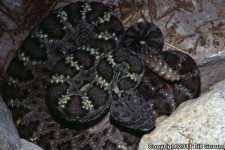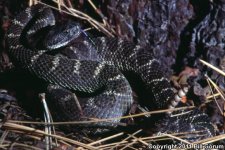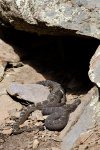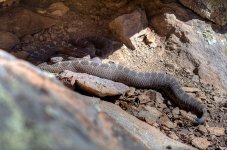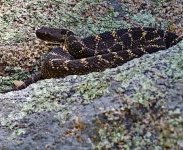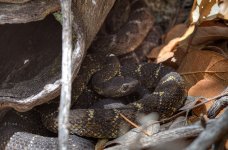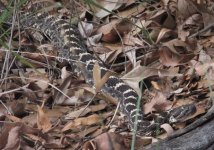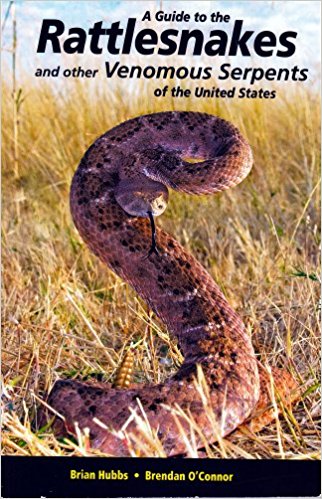| Range: |
 |
| Other Names: |
Black Rattlesnake |
| Description: |
A medium to large 15"- 42" rattlesnake with black blotches on a dark
gray-brown to black background. Young have prominent brown blotches on
a light gray background. Coloration gradually darkens as the animal
ages. Black background with thin white, or yellow, crossbars on the
back. The pupils are vertically elliptical and the dorsal scales are
keeled. Head is broad and triangular the neck is slender. Has heat
sensing pits one on each side of the face between the eye and nostril. |
| Simialr Species: |
Diamondbacks and Mojaves have white and black banding on the tail. Prairies are lighter in color. |
| Venom: |
Moderate venom yields with potent hemorrhagic toxins. |
| Habitat: |
Inhabits semi desert grassland, chaparral, conifer woodland, evergreen
woodland, and montane conifer forest. Can be found in or near rocky
drainages with permanent or semi-permanent water and on rocky slopes.
|
| Behavior: |
This ground-dweller is primarily diurnal, but in hot weather nocturnal. |
| Hibernation: |
Hibernates alone or in communal dens during the cold months of winter
and late fall. |
| Reproduction: |
Gives live birth in the summer. The females will commonly go to communal rookeries to give birth. They will remain with the babies for a short time. |
| Diet: |
This snake uses heat sensing pits detect
warm-blooded prey which consists of: rats, squirrels, mice, lizards and birds. |
Authored by Garth Teitjen

